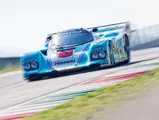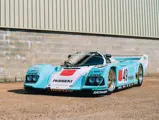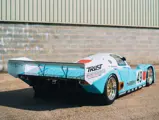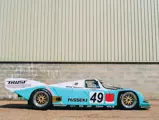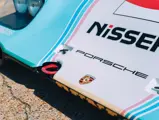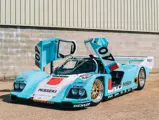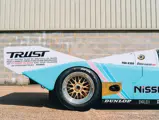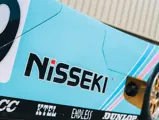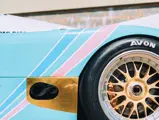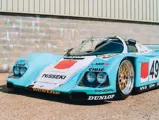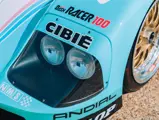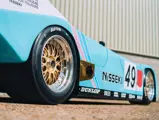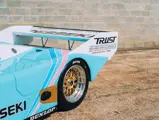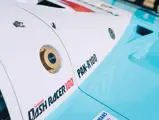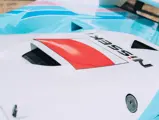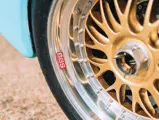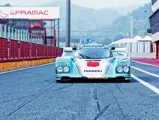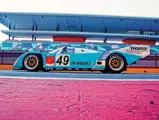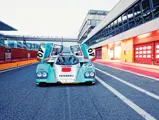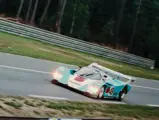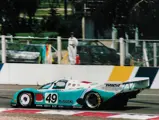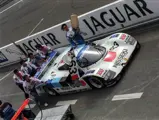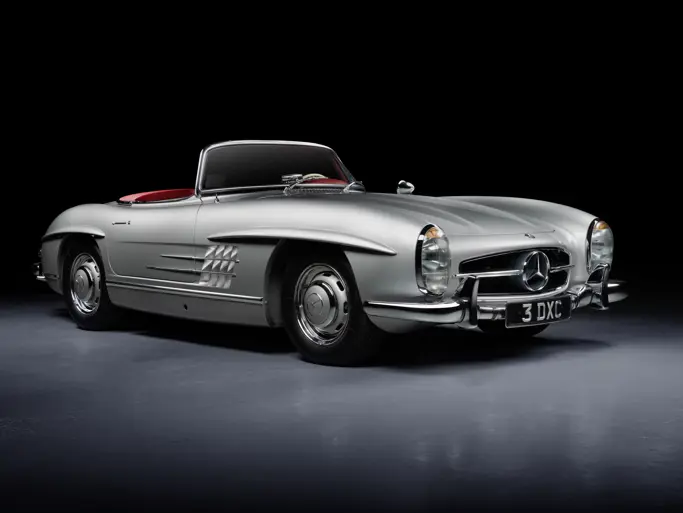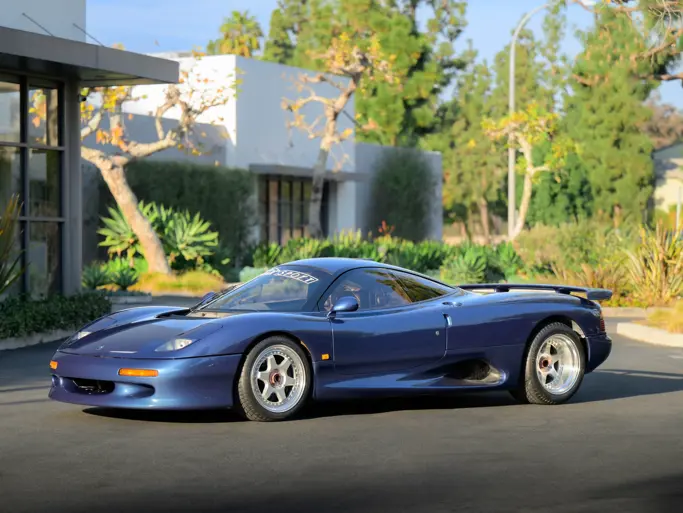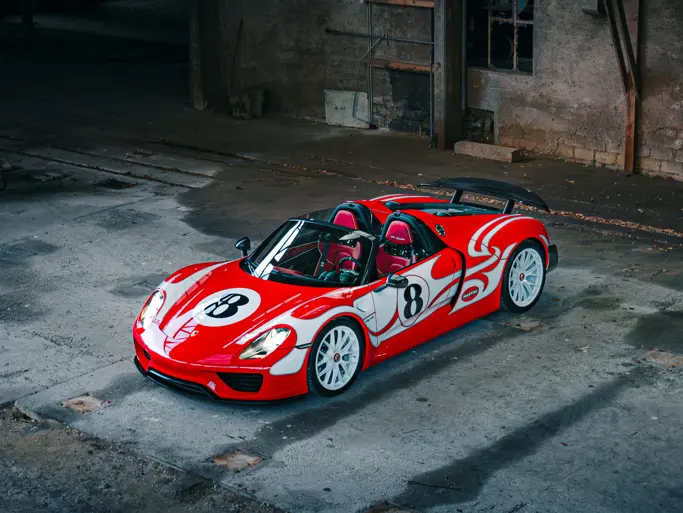London 2019
1990 Porsche 962 C
Offered from the Autobau Collection
{{lr.item.text}}
£1,000,000 - £1,500,000 GBP | Not Sold
 | Kensington, London, United Kingdom
| Kensington, London, United Kingdom
{{internetCurrentBid}}
{{internetTimeLeft}}

- Offered from the Autobau Collection
- Two-time 24 Hours of Le Mans participant, finishing 13th overall in 1990
- Subjected, in 2009, to a $300,000 restoration to exacting standards by Canepa Design
- A competitive and highly eligible entry into Historic Group C racing events
With a top-line international career spanning some thirteen years, including no less than seven Le Mans wins and five World Sportscar Championship titles, the Porsche 956 and its close sibling, the 962, remain arguably the greatest long-distance sports racing cars of all.
In a significant departure for Porsche, the 956 featured an aluminium monocoque chassis, rather than a tubular spaceframe of the type which had served them so well previously. The type-935 flat six-cylinder engine of the 936 was retained, to which twin KKK turbos and an all-synchro five-speed gearbox were fitted. Porsche exploited the area of aerodynamics to the limit of the rulebook, inboard rear suspension enabling the creation of two huge venturi channels to maximise ground effect underneath the car. Consequently, the 956 reputedly generated over three times as much downforce at speed as the legendary 917—a car barely a decade old.
The evolutionary 962—essentially a long-wheelbase 956—had been introduced in 1984, and chassis 962-159 was delivered in long-tail form to the Japanese Trust Racing Team immediately prior to the 1990 Le Mans 24 Hours. The driver lineup of George Fouché, Steven Andskar, and Syunji Kasuya was a promising one; Fouché had proven himself to be one of the top non-Works 956/962 drivers during spells with the Kremer and Obermaier teams, whilst Andskar had considerable Group C experience in Japan, and Kasuya had won the C2 class at Le Mans the previous year.
Although there were no factory Porsche or Sauber-Mercedes teams entered for the 1990 race, four TWR-run Jaguar XJR-12LMs lined up alongside five Works Nissan R90s and five Toyota 90C-Vs. Porsche were well represented by Joest Racing—who had won the race in 1984 and 1985 with their 956s, and who had entered four cars on this occasion—as well as by the two-car Brun, Kremer, and Obermaier teams.
Qualifying saw Mark Blundell’s Nissan take pole with a remarkable lap some six seconds faster than the 2nd-placed Brun 962C, with Nissans taking the next three places. The lead Joest 962C took 7th place, closely followed by three of the four Jaguars who were concentrating on their race setup. Chassis 962-159 ended up an excellent 11th on the grid—a fact made all the more impressive by the fact that both 962s in front of it had been running Works-specification 3.2-litre engines, whereas the Trust car was equipped with the less-powerful customer-spec 3.0-litre unit.
In the race, the Nissan challenge ultimately faltered, handing the Jaguars a comfortable 1-2 finish ahead of the unlikely all-British-crewed Alpha Team 962 in 3rd. The Brun car had held a heroic 2nd place for much of the race but was cruelly denied a deserved podium finish by engine failure only four laps from home. The lead Joest car crossed the line 4th, with customer Porsche teams taking 8th to 16th positions—and 962-159 finishing a valiant 13th. That the Trust trio finished ahead of the second Joest car, driven by four-time Le Mans–winner Henri Pescarolo and former Grand Prix–winner Jacques Laffite, spoke volumes as to the competitiveness of the midfield battle.
The team returned to La Sarthe in 1991, opting to retain the services of Fouché and Andskar but outsourcing the running of the car to the local Courage Competition team. Unfortunately, the timing of the race coincided with one of the periodic upheavals in sports car racing, with the FIA having mandated the shift to 3.5-litre normally aspirated cars for 1992. Given the lack of new-generation cars ready in time for the race, the older Group C cars were permitted to still run, but were significantly handicapped by weight, fuel, and grid penalties. As a result, Schlesser’s ‘pole-sitting’ Sauber-Mercedes C11 was relegated to 11th on the grid, behind ten other normally aspirated cars, all of which it had outqualified! Similarly, 962-159—having qualified a promising 16th—was relegated to 22nd on the starting grid.
As expected, in the race, the new 3.5-litre cars suffered from poor reliability, and it was the relatively unfancied Mazda 787B of Gachot/Weidler/Herbert—the beneficiary of a significant weight concession from FISA before the race—which crossed the line first to record a famous victory. The three remaining TWR XJR-12s finished in formation to take the next three places, whilst the sole surviving Sauber-Mercedes rounded out the top five. It had been a relatively low-key race for Porsche, with the Stuck/Jelinski/Bell Joest car the first 962 home in 7th place. Chassis number 962-159 had been running strongly throughout the race, only to be denied a finish when its gearbox failed with a mere 50 minutes remaining.
The car was acquired by former IMSA racer and noted Porsche restorer Bruce Canepa in August 2008. Thereafter it was treated to an exacting restoration at his race shop in Scotts Valley, California, which included a complete strip down to the bare tub and rebuilds of the engine, gearbox, brakes, and turbos. New fuel, brake, and oil lines were installed, and all major load-bearing components were crack-tested. Great care was also taken to refit the body to the tub, and the car was refinished in its 1991 Le Mans livery. In May 2012 the car was sold to the consignor, in whose custody it has been used for occasional track days and kept in his own private museum in Switzerland.
Having participated in only two races in its life—albeit both at Le Mans—962-159 remains one of the most original and correct of all 962s. Presented in its 1991 Le Mans ‘high downforce’ configuration, it represents the quintessential Porsche Group C car and offers a rare opportunity to acquire a highly significant example of arguably the greatest endurance racing car of them all. Immaculately prepared and ready for immediate use, it would doubtless be welcomed in Historic Group C series on both sides of the Atlantic, as well as at prestigious stand-alone events such as Le Mans Classic, Le Mans Legends, and the Classic 24 Hour at Daytona.

